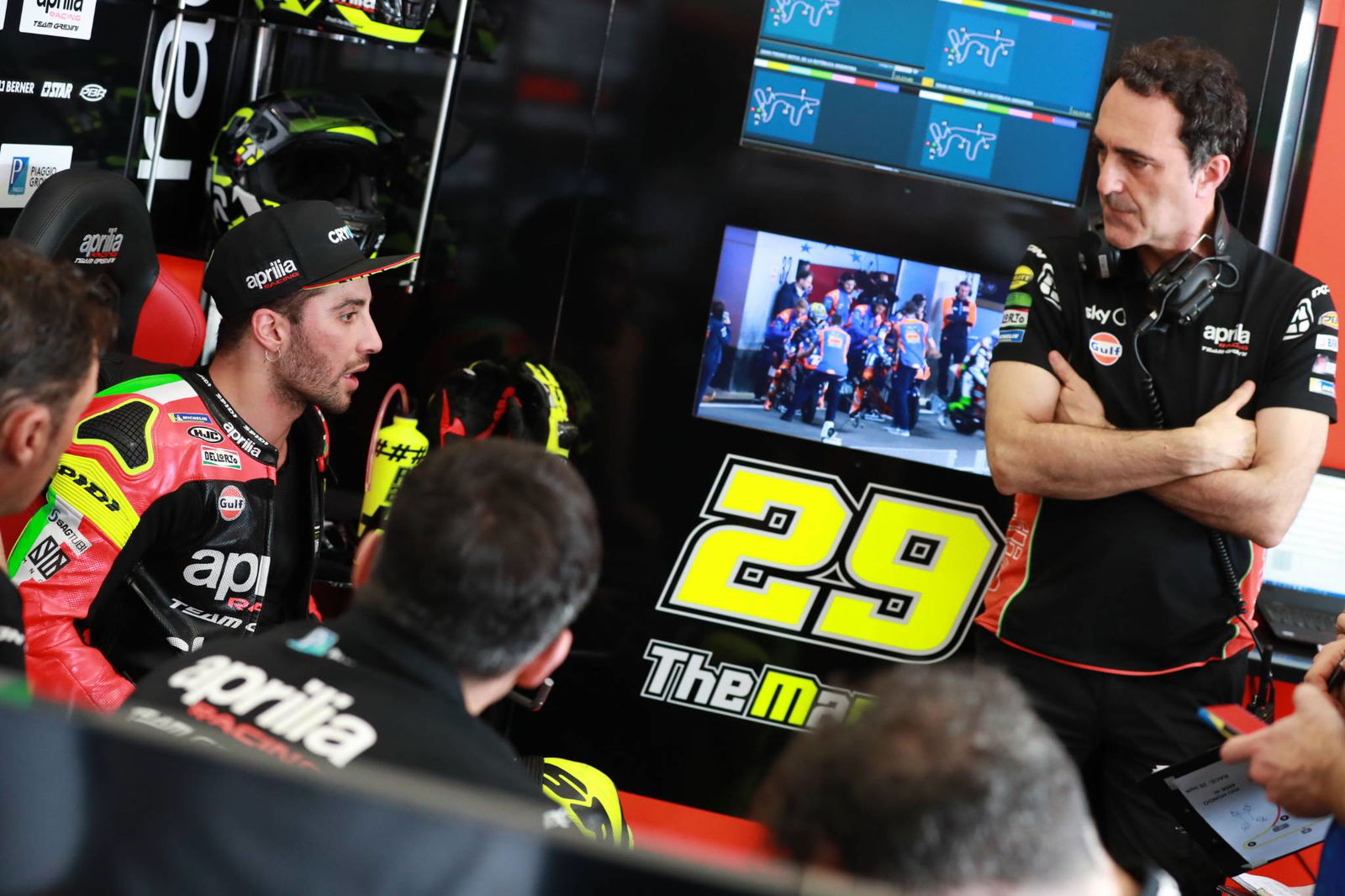Yamaha: Sometimes you need to reset
Yamaha’s Lin Jarvis has explained the thinking behind the factory’s winter of reorganisation, stating a “reset” was necessary after the fallow years of 2017 and ‘18, with those effects already being felt two rounds into the season.
Along with a change in personnel – Takahiro Sumi was promoted to lead the MotoGP project, Kazuhiza Takano took his place as chassis designer – Jarvis has cited an amendment in communication between departments as another innovation that he hopes will aid Yamaha’s quest to win a first rider’s title in four years.

Yamaha’s Lin Jarvis has explained the thinking behind the factory’s winter of reorganisation, stating a “reset” was necessary after the fallow years of 2017 and ‘18, with those effects already being felt two rounds into the season.
Along with a change in personnel – Takahiro Sumi was promoted to lead the MotoGP project, Kazuhiza Takano took his place as chassis designer – Jarvis has cited an amendment in communication between departments as another innovation that he hopes will aid Yamaha’s quest to win a first rider’s title in four years.
With Maverick Viñales showing strong speed through preseason and Valentino Rossi ending a nine-month podium drought in Argentina, a sense of optimism surrounds the Iwata factory after two largely negative years in which they “were stuck … going round in circles.”
Jarvis, the factory’s Managing Director, also revealed to Crash.net that changes are still ongoing, with the factory keen to recruit more engineers to man its growing racing department in Milan, Italy. “This hopefully will bear some fruits immediately,” he said. “But more as we go into 2020 and 2021.”
“Sometimes you need to freshen up and change the team,” said Jarvis in conversation with Crash.net. “You don’t need to change all the players in the team, but you need to change a key way of working or a key member, or a key influence.
“Our former project leader [Kouiji] Tsuya was a very nice guy, a really good engineer. But I think we were stuck since 2016, 2017, 2018, kind of going round in circles a little bit. As we stated in the past, sometimes we took a wrong road. Sometimes it’s just good to reset.
“I’d say that’s what we’ve done primarily. Most of the players in there are unchanged, but we’ve taken a few new people. Tsumi has a new responsibility. I would say he’s handling it very well. Instead of being in charge of chassis design he is now the group leader. That’s a key responsibility for him. He’s obviously seen and analysed some of the issues we’ve had over the last few years and now he’s bringing in his method to solve those issues.
“In addition we have a new general manager in charge under Tsuji, which gives us more manpower, and frees up Tsuji to focus more on the engineers. So Tsuji is now much more focussed on engineering, rather than running the whole show, running motocross production, running the whole division. He’s got this support."
Jarvis continued: “We brought back a new or old, it depends how you want to look at it. The replacement of Tsumi as the chassis designer is our former chassis designer from the past. Takano is his name. He was a very, very good chassis designer in the past – he still is a very good chassis designer.
“He was taken from the MotoGP group into the three-wheel motorcycle development group. He’s the guy behind the Niken. That’s his last major project. Why did they take him into this three-wheel, or multi-wheel vehicle (MWV)? Because of his expertise. To have him come back in as well reinforces that area.
“I think it’s the result of two or three key changes or function and newcomers that allows us to regroup.”
Through several of 2018’s darker moments, Yamaha’s factory riders appeared less than enamoured with the communication between the race team and the factory in Japan.
At Aragon – undeniably the season’s nadir – Rossi said, “I hope that it's important for Yamaha to react,” when reminded the recent 23-race winless streak was a new record drought. "So maybe some top guys see the number, and ask, ‘Why?’”
From Jarvis’ words, this has been addressed. “One of the biggest things we’ve changed is much more open communication. Sometimes it’s a typical thing in a big company [where] you can arrive in a situation, especially when the chips are down and you’re struggling, where you have a lot of individual islands that don’t all communicate as freely as would be desired.
“I think one of the things that’s happened now is there is a much more open and sharing culture that we brought in – not only within the Japanese group, but between the Japanese and the European group.
“Most of the integration of our engineering department in Italy has been more recognised, and is also being reinforced. We are in recruitment to get new engineers in Italy as well.
“So I think the mindset is there that, whatever happened in the past, we know. It’s time for us to analyse the situation well and say, ‘What do we need to do?’ Our mission is to get back the title as soon as possible. So it’s about what we have to do to get that.
“I would say we’ve seen many positive effects already and we’re only two GPs into the season. Hopefully if we continue it should bear fruit.”
With Rossi and Viñales regularly citing the electronics as one of the M1’s main failings in recent years, Yamaha has established an ‘electronic development group’ within its European base.
“We have two groups with that in particular. We have a vehicles dynamic group, and we have an electronic development group. In the past we only had a vehicle dynamics group.
“So that is a new organisation. It’s not a huge group. But we have Belgian, Spanish and Italian engineers working there and interacting with Yamaha Japan. As I said, we’re expanding that group, and that group is involved here at circuits as well.
“It’s a positive thing. It’s a sign that Yamaha Japan recognises it needs support outside their own group. There is a lot of expertise there, which we know. The forks and the suspension is coming from Ohlins. The brakes are coming from Brembo. The tyres come from Michelin.
“There is lots and lots of expertise out there, but also from an engineering side, the group in Europe allows them to do different things than what they’re doing in the mother company at YMC. It gives us more manpower as well.
“Obviously we have a European mindset. So I think we can be strong by combining the European mindset with the Japanese working methods. We all have to collaborate together so this hopefully will bear fruits some immediately, but more as we go into 2020 and 2021.”

